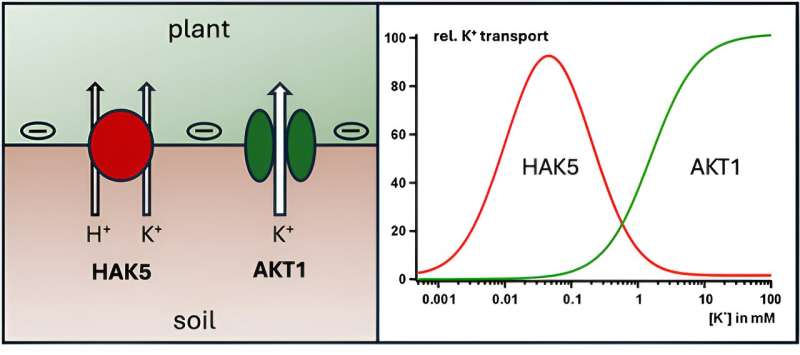A new study from researchers at the University of Würzburg in Germany reveals how plants can efficiently extract and utilize even the smallest traces of potassium, an essential nutrient, from the soil. This finding could lead to the development of crops that can thrive with less fertilizer, a crucial step towards more sustainable agriculture. The research sheds light on the intricate mechanisms plants use to adapt their potassium uptake to varying soil conditions, potentially paving the way for sustainable agriculture practices.

Optimizing Potassium Absorption for Efficient Growth
Plants require large quantities of potassium, a critical nutrient for their growth and development. However, the amount of potassium in soils can vary significantly, with potassium-poor soils containing up to a thousand times less of this essential element than potassium-rich soils.
To adapt to these fluctuations, plants have evolved intricate mechanisms that allow them to adjust their potassium uptake based on the available soil conditions. This is achieved through the interplay between the potassium ion channel AKT1 and the potassium transporter HAK5. While AKT1 is effective at high potassium concentrations, relying on the natural electric field of the cell membrane as an energy source, HAK5 can operate even in soils with low potassium levels by utilizing the energy from the pH gradient across the cell membrane.
Unlocking the Energy-Saving Potential of Potassium Transport
The new study, led by Rainer Hedrich, a biophysicist from the University of Würzburg, unravels the underlying mechanisms behind this energy-saving strategy. The researchers found that when soil potassium levels are high, the energy-intensive HAK5 transporter is switched off, allowing the plant to conserve its resources.
This is made possible by a potassium sensor within the HAK5 transporter, which allows the plant to detect the availability of potassium in the soil. When potassium levels are low, the sensor triggers the activation of HAK5, enabling the plant to extract even the smallest traces of this essential nutrient. Conversely, when potassium is abundant, the sensor deactivates HAK5, allowing the plant to rely on the less energy-demanding AKT1 channel for its potassium needs.
Towards Sustainable Agriculture: Breeding Crops for Nutrient-Poor Soils
The implications of this research are significant for the future of agriculture. By understanding the intricate mechanisms plants use to optimize their potassium uptake, researchers can now focus on breeding crops that can thrive on non-fertilized or lightly fertilized fields, reducing the need for excessive fertilizer use.
This is a crucial step towards more sustainable agriculture, as it can help address the environmental concerns associated with over-fertilization, such as water pollution and greenhouse gas emissions. Moreover, this knowledge can contribute to the development of crop varieties that are more resilient to nutrient-poor soil conditions, ultimately improving food security and promoting the transition to a more sustainable agricultural system.
